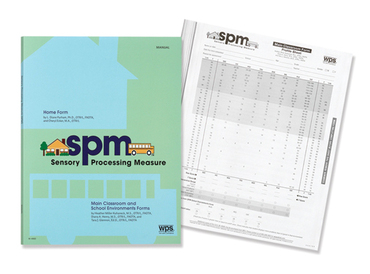Sensory Processing Measure (SPM) provides a complete picture of children's sensory processing difficulties at school and at home
Sensory Processing Measure
SPM
Sensory Processing Measure (SPM) provides a complete picture of children's sensory processing difficulties at school and at homeChoose from our formats
Test forms & reports
Booklets, record forms, answer sheets, report usages & subscriptions
2 options
Support materials
Manuals, stimulus books, replacement items & other materials
2 options
All products
All tests and materials offered for SPM
4 options